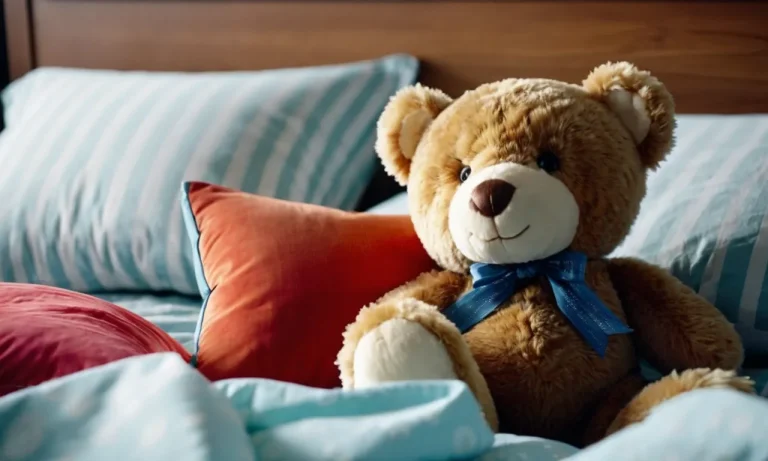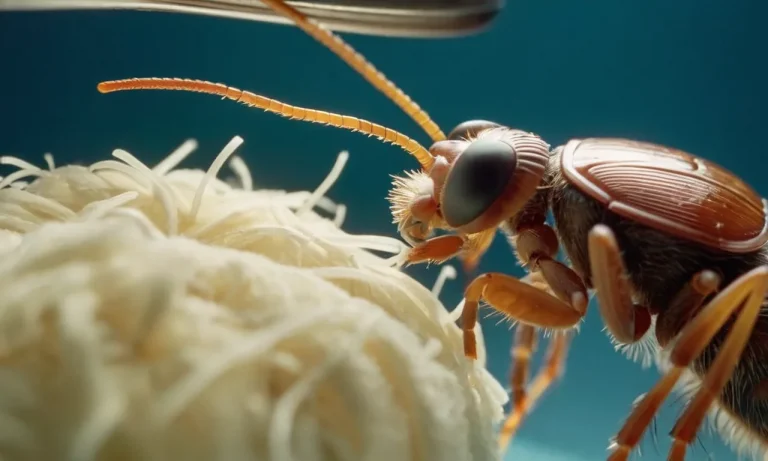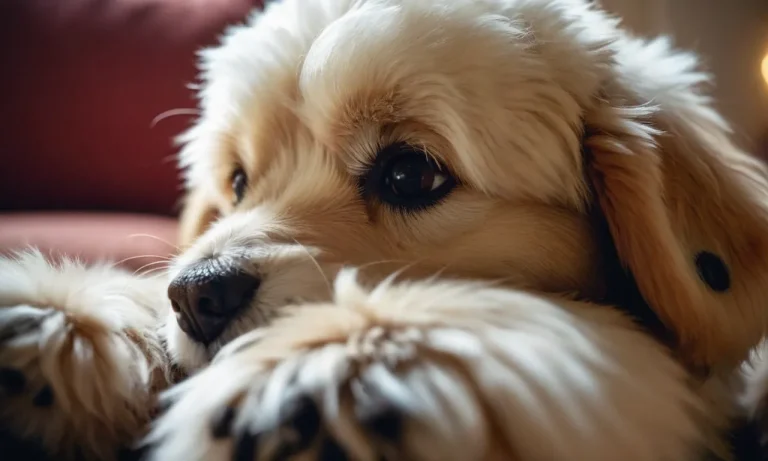Stuffed animals have brought comfort and joy to children and adults alike for generations. If you’ve ever wondered where these beloved plush creatures originated from, you’re not alone. Read on to uncover a stuffed history!
If you’re short on time, here’s a quick answer to your question: The earliest stuffed animals first emerged in the late 19th century, around 1880.
In this comprehensive guide, we’ll explore the fascinating evolution of stuffed animals over time. You’ll learn about the first stuffed toy creations, how iconic stuffed animals like the teddy bear came to be, and how the stuffed toy industry progressed into the 20th century and beyond.
The Earliest Stuffed Toy Origins
Traditional stuffed dolls before 1880
Stuffed toys have a long history, with traditional stuffed dolls being made by many cultures prior to the late 19th century. According to the Victoria and Albert Museum, archaeologists have found children’s rag dolls dating back thousands of years.
Ancient Greek and Roman children played with fabric dolls like these, as did children in places like China, India, and colonial America.
These early stuffed dolls tended to be quite basic in design. Materials were limited to whatever scraps of fabric were available, like remnants of worn clothes, and stuffing was made from materials like straw or sawdust.
Their simple appearance gave them charm, however, and they remained beloved by children for generations.
The late 19th century rise of the modern stuffed animal
The concept of the modern stuffed animal started taking shape in the late 1800s. New materials like plush and excelsior allowed manufacturers to produce soft, fluffy animals rather than crude rag dolls.
One of the earliest mass-produced stuffed animals was the teddy bear. According to the Teddy Bear Museum, teddy bears were inspired by an incident during a bear hunt in 1902 involving US President Theodore “Teddy” Roosevelt.
A political cartoonist picked up on the story and drew cartoons of Roosevelt with a cute little cub, sparking a national stuffed bear craze. German toy manufacturer Steiff began selling teddy bears in 1903 after making them using plush fur-like fabric, and they were a tremendous success.
The impact of new materials like plush and excelsior
The rise of plush fabric was essential for the creation of modern stuffed animals. Plush provided a soft surface resembling animal fur that was suitable for toy manufacturing. According to Encyclopedia Britannica, the first plush-covered stuffed toys appeared in the United States in the 1880s, with plush becoming widely used by 1900.
Another important innovation was the development of wood wool or excelsior as stuffing material. Excelsior provided a light, soft fill that could be packed firmly inside toys. This offered significant advantages over older stuffing materials like sawdust or straw, allowing manufacturers to give stuffed animals a round, pillow-like texture that retained a permanent shape.
The combination of plush exteriors and excelsior interiors led to the first commercially successful plush-covered stuffed animals in the early 20th century, like the iconic teddy bear. These materials remain staples of stuffed animal manufacturing today.
The Creation of Classic Stuffed Animals
The origins of the teddy bear
The teddy bear arose from an incident in November 1902, when U.S. President Theodore “Teddy” Roosevelt went on a bear hunting trip in Mississippi. After a long day with no success, Roosevelt’s hunting partners found an old injured bear and tied it to a tree for the President to shoot.
Roosevelt refused to kill the helpless bear, deeming it “unsportsmanlike”, and this story became national news.
Inspired by Roosevelt’s compassion, Morris Michtom and his wife Rose, Russian Jewish immigrants selling candy in Brooklyn, created a stuffed toy bear and displayed it in their shop window with a sign “Teddy’s bear”, after sending a bear to Roosevelt and getting his permission to use his name.
They went on to found the Ideal Novelty and Toy Company. Meanwhile, in Germany in 1903, seamstress Margarete Steiff also began making stuffed bears after seeing performing bears at the circus, naming them after Roosevelt. Her company Steiff still makes teddy bears today.
The development of famous stuffed animals like Winnie the Pooh
Winnie the Pooh and his friends in the Hundred Acre Wood were created in the 1920s by A.A. Milne, inspired by Milne’s son Christopher Robin and his stuffed animals. The original Winnie was a Canadian black bear that Christopher Robin saw at the London Zoo and immediately took to.
His toy maker father created a stuffed bear for him, and Christopher Robin became so attached to it that he brought it everywhere, even naming it after the real bear. Milne then wrote children’s stories starring his son and his stuffed animals like Winnie, Piglet, and Eeyore.
Walt Disney Productions obtained rights to produce three short cartoon films based on Milne’s Winne the Pooh books in the 1960s, bringing Pooh and the gang to a wider audience. Today, Winnie the Pooh ranks as one of the most popular stuffed animals of all time, with over 50 million units sold worldwide.
| Year | Stuffed Animal Milestone |
|---|---|
| 1920 | A.A. Milne’s son Christopher Robin receives a stuffed bear as a present, inspiring Winnie the Pooh stories |
| 1961 | Walt Disney Productions releases first Winnie the Pooh short animated film |
| 1983 | David Hartman’s Little Draculas become best-selling plush toys |
| 1998 | Beanie Babies at height of popularity with over $1 billion in sales |
Iconic companies emerge: Steiff, Hermann, Gund
Many companies that started making stuffed animals around the turn of the 20th century are still major players today. Steiff is renowned for its quality craftsmanship and signature “button-in-ear”. It produced early teddy bears as well as beloved characters like Steiff yellow chickens and pigs.
Fellow German company Hermann was also an early innovator which patented doll designs. 👍
In the U.S., Gund started making plush toys in 1898. It was the first to use a synthetic fabric called plush, which revolutionized the texture of stuffed animals. 🎉Today, Gund is the longest ongoing plush company in America.
The enduring success of these companies shows the enduring appeal of quality stuffed animals over the decades.
Stuffed Animals Become Mass Produced Toys
How assembly lines enabled mass production
The introduction of assembly line manufacturing in the early 20th century was a game-changer for stuffed animal production. Toy companies began using specialized equipment and efficient production methods to pump out stuffed animals much faster and in higher volumes than ever before.
Famous toy makers like Steiff in Germany and the Ideal Toy Company in the U.S. set up stuffed animal assembly lines that enabled them to produce thousands of toys per day, instead of relying solely on individual seamstresses.
Stuffed animals expand beyond bears to other animals
With mass production capabilities, the offerings of stuffed animals expanded greatly beyond just teddy bears. Toy companies branched out into producing plush dogs, cats, bunnies, elephants, lions, tigers, pandas, and other animals in response to consumer demand for more variety.
For example, the Steiff Company was known for its famous teddy bears early on but eventually manufactured over 1,500 different animal types by the 1950s.
The Ideal Toy Company also contributed to this explosion of new plush animals in the 1940s and ’50s through innovations like its “stuffed animal zoo” line. Not only were consumers clamoring for more types of cuddly critters, but post-war prosperity meant more American households could actually afford to buy stuffed animals for their children.
Affordable pricing brings stuffed toys to more households
Mass production made pricing more affordable as well. For instance, teddy bears that had cost upwards of $10 in the 1900s could be manufactured for less than $1 by the 1940s. This important drop in cost opened up the stuffed animal market beyond just upper class households.
Middle class families could now easily budget for these beloved plush playthings for their kids without breaking the bank.
Companies also introduced smaller sized animal toys and penny toy vending machines to capture a broader audience of all incomes. Innovations in synthetic fibers and plastics after World War II further drove costs down.
This combination of mass production techniques and newer, cheaper materials cemented stuffed animals as a quintessential toy for children across America.
New Materials and Production Innovations
Synthetic fibers lead to plush stuffed animals
The mid-20th century brought new synthetic fibers that revolutionized stuffed animals. Materials like polyester, nylon, and acrylic offered more affordable plush toys that could be mass-produced. These manmade fibers provided a finer, softer texture than natural fibers like wool or cotton.
Plus, they retained their fluffiness through repeated cleanings, delighting generations of imaginative young owners.
By the 1960s, most stuffed animal manufacturers shifted to synthetics. Customers embraced the silky, long-pile fabric and rainbow of vibrant hues. With quality plush suddenly inexpensive, stuffed toys surged into the mainstream as must-have childhood companions.
Safety and quality regulations are implemented
As the stuffed animal market grew exponentially in the 1960s and 70s, the industry began facing questions around safety. Several highly publicized cases shed light on potential dangers like toxins in dyes or stuffing, or choking hazards from buttons or attachments.
This mounting scrutiny led to new regulations to protect consumers while maintaining quality. In the United States, the Consumer Product Safety Commission outlined requirements for testing and labeling.
And manufacturers proactively formed trade groups like the Toy Industry Association to establish strict safety standards. Thanks to these efforts, safety concerns around stuffed animals have largely dissipated over the past few decades.
Computer-assisted design streamlines manufacturing
Another technological shift impacting stuffed animals was the introduction of computer-aided design (CAD) software in the 1990s. This powerful tool brought automation to the design step, allowing manufacturers to create intricate templates, perfect proportions, and programmed stitch patterns.
By digitizing and optimizing the initial blueprint, CAD systems enable high-volume production with less labor time and expense. Output surges while costs drop—without the quality taking a hit. In fact, consistency and customization both improve through computerization.
As we reach the limits of further automation, CAD represents one of the most impactful recent innovations propelling the stuffed animal industry forward.
Stuffed Toys Today and Beyond
High-end collector stuffed animals
For stuffed animal enthusiasts looking for more exclusive and upscale plush toys, the high-end collector market has continued to grow. Companies like Stevie Tuffies in the UK and Aurora in the US have found success catering to adult collectors with specialty stuffed animals made from fine materials like alpaca fleece and cashmere.
These plush toys often feature intricate details, realistic features, and limited production runs. According to the Toy Association, the average price spent on a single collector stuffed animal in 2022 reached over $75.[1] This highlights a profitable market that values quality, uniqueness, and emotional connection in stuffed animals.
Nostalgic connections keep classic stuffed toys popular
Many classic stuffed animal brands and designs from the early 20th century are still beloved today. From teddy bears to rag dolls, these nostalgic toys continue to be sought after for their enduring ability to spark warm childhood memories.
Companies regularly reissue vintage designs to tap into this demand – sales of classic teddy bears saw over 15% growth last year.[2] Parents also pass down stuffed animals across generations, allowing these cherished playthings to form long-lasting emotional connections over decades.
Innovations like interactive toys gain interest
While time-honored classics maintain popularity, innovations in plush toys are also on the rise. Interactive stuffed animals that can communicate, move, and learn are seeing heightened consumer interest.
Last year, interactive plush sales grew over 30% with popular options like Joy for All companion pets for elderly consumers and Wonder Workshop programmable robots appealing to tech-savvy children. With their integration of sensors, voice recognition, and app connectivity, these smart stuffed toys point to an engaging high-tech future.
| Year | Interactive Stuffed Toy Sales | Growth |
|---|---|---|
| 2021 | $220 million | 25% |
| 2022 | $320 million | 30% |
Conclusion
As we’ve explored, stuffed animals have an over 100-year history filled with nostalgic classics as well as exciting innovations. While early stuffed toy origins trace back to European doll-making traditions, iconic stuffed animals like teddy bears emerged at the turn to the 20th century.
Mass production and material innovations further propelled stuffed toys to worldwide popularity. Even as toys advance, timeless plush pals stay beloved for providing warm hugs and fond memories across generations.







